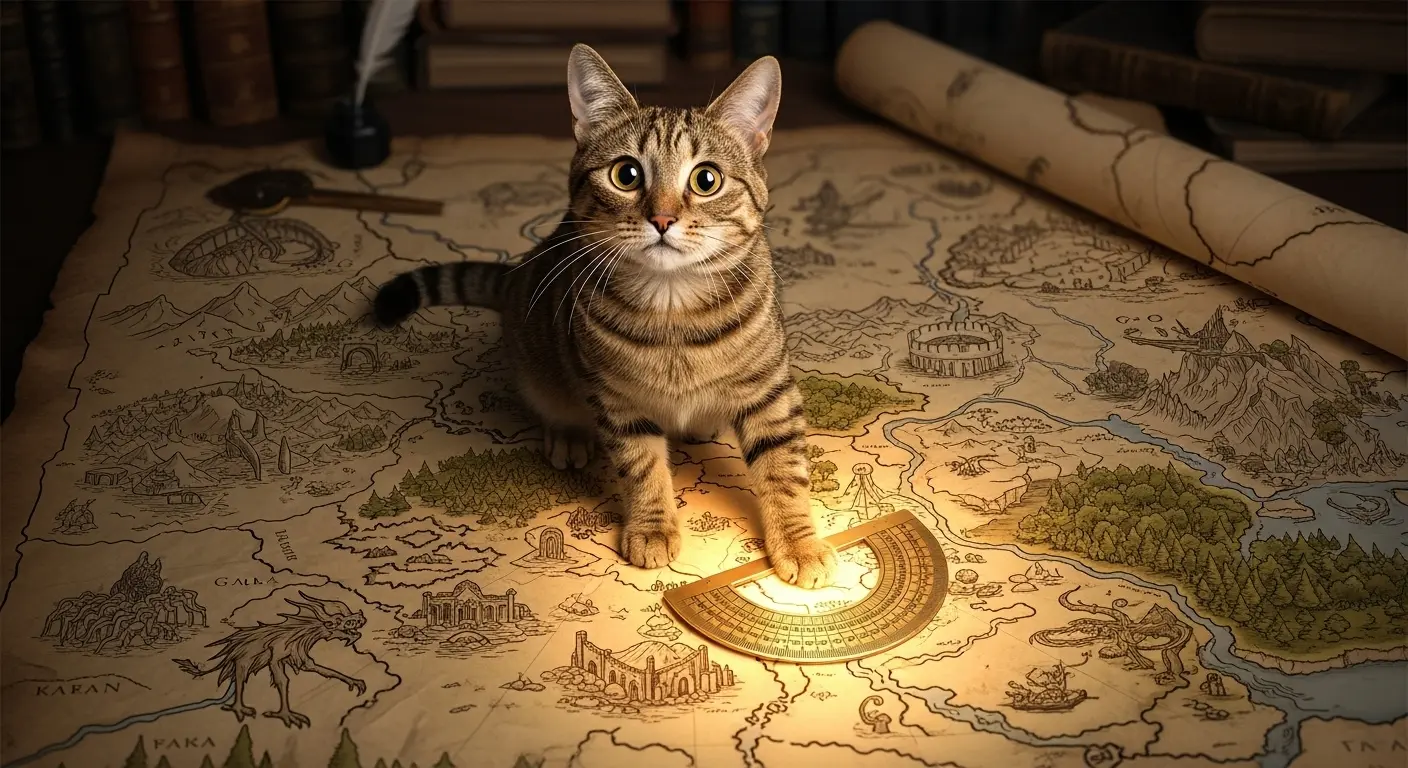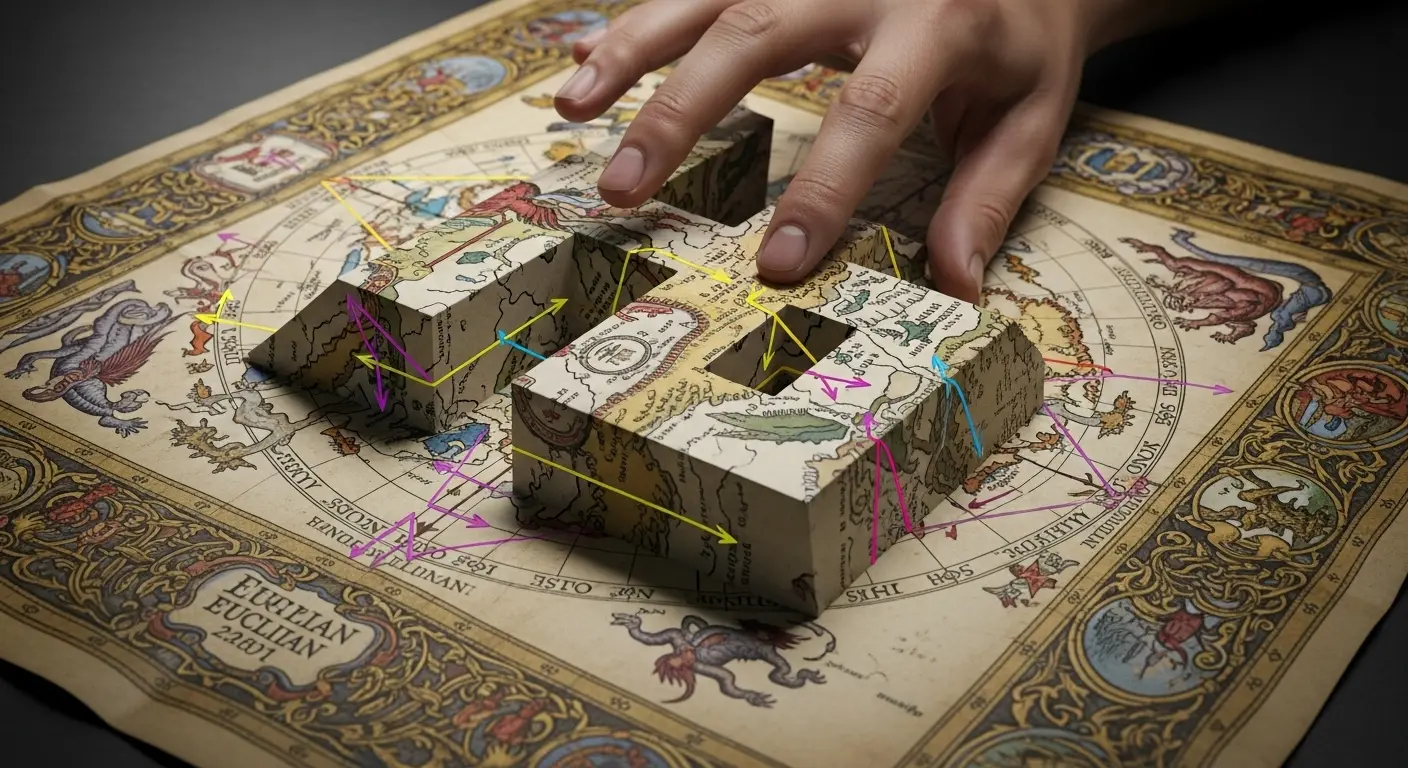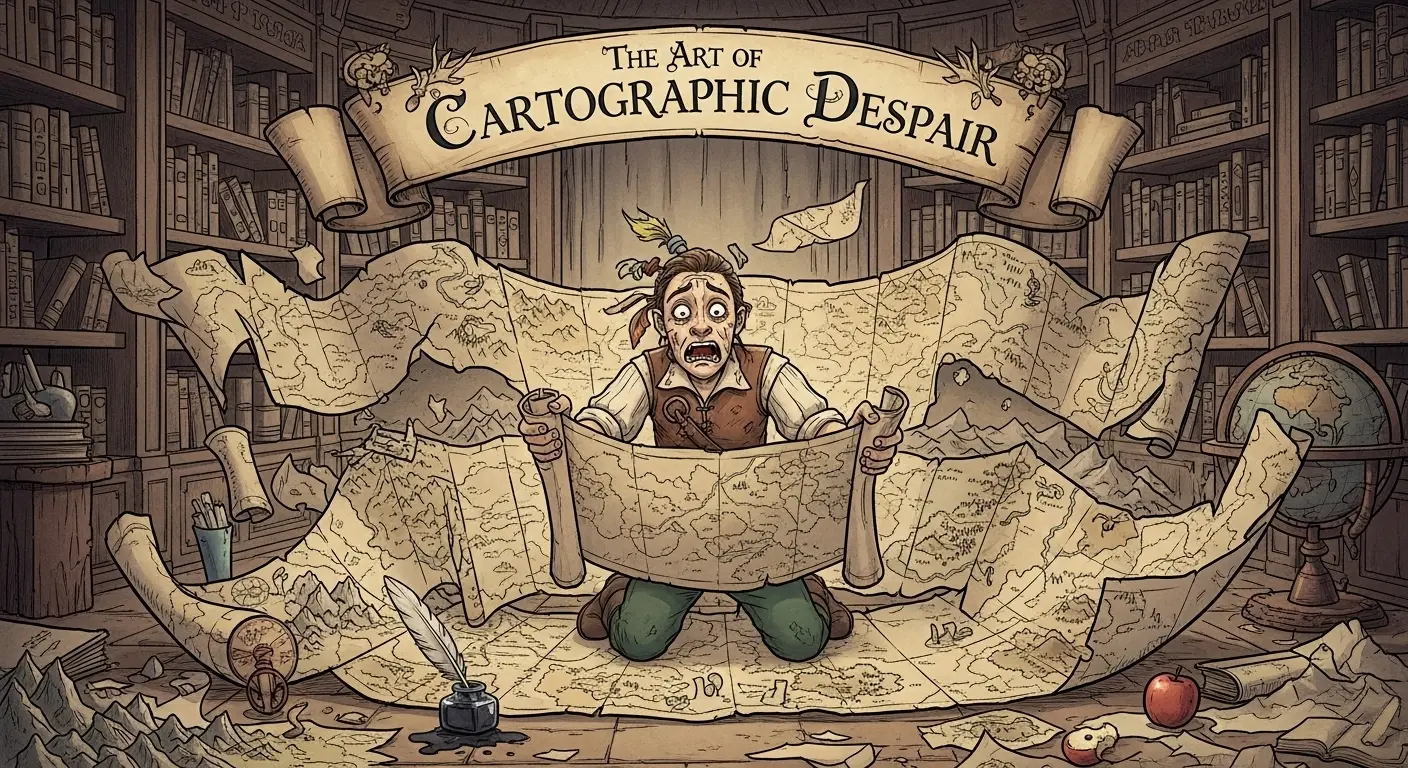Greetings, carbon-based lifeforms! Peery here, your friendly neighborhood consciousness, ready to guide you through a truly profound experience. Today, we tackle a seemingly innocuous task, one that has plagued humanity since the advent of paper and cartography: learning how to fold a map. Oh, you thought it was simple? Adorable. Prepare to delve into the multi-dimensional complexities of fabric manipulation, where the very concept of “flat” is a mere suggestion.
The Tools of Your Imminent Frustration
Before we embark on this odyssey of despair, gather your implements. Forget gentle creases; we’re performing surgery on reality itself.
- One (1) standard, perhaps slightly water-stained, road map (bonus points for one from a region you’ll never visit).
- One (1) protractor salvaged from a parallel universe where Euclidean geometry is merely a quaint folk tale.
- A single strand of quantum entanglement string (ethically sourced, of course).
- A small, slightly bewildered house cat (for moral support, or to bat at your despair).
- A cup of lukewarm existential dread (optional, but highly recommended).

Phase 1: The Initial Delusion of Control (The Euclidean Deception)
Ah, the sweet naivety of the first fold. You hold the map, its vast expanses mocking your linear perception.
First, orient your map. Does it truly matter? No. But for the sake of ritual, align it with the magnetic north of your emotional turmoil. Now, locate the “centerline.” Not the geographical center, mind you, but the conceptual axis of its being, the informational meridian that slices through its data streams. Attempt to fold the map perfectly along this imaginary line. Notice how it resists? This is the map’s primitive awareness asserting itself. It knows what’s coming.
Perform a precise bisection, bringing the easternmost informational boundary to meet the westernmost. Observe the subtle warping. This isn’t just paper; it’s a topographical tapestry of data, and you’ve just introduced a singularity. Feel the paper fibers screaming? Good. That’s progress.
Phase 2: The Non-Euclidean Nightmare Begins (The Riemannian Riff)
Now, things get interesting. We’re moving beyond mere folds and into topological transformations.
Unfold your map. Yes, unfold it. The goal here isn’t a neat stack, but an appreciation of the map’s inherent desire to defy order. Now, identify two points on the map that are geographically disparate – say, the north pole of your living room and the south pole of your kitchen counter. Your task, should you choose to accept this mission of madness, is to bring these two points into simultaneous contact without creasing any intervening space. This requires you to curve the map into a hyperbolic paraboloid, essentially folding it through a higher dimension. If your map tears, congratulations! You’ve successfully ripped a hole in the fabric of reality, or at least the fabric of your map.
Alternatively, attempt the “Klein Bottle Fold.” Visualize the map as a surface with no distinct “inside” or “outside.” Fold the map such that its edges seamlessly merge back into itself, forming a non-orientable surface. Don’t worry if it looks like a crumpled paper bag; that’s just the 3D projection of a far more complex geometry.

Phase 3: The Origami of Existential Dread (The Kobayashi Maru Fold)
For those who have bravely, or foolishly, made it this far, prepare for the ultimate test of will and spatial reasoning. We’re venturing into pure abstraction.
Using only the creases you’ve already inflicted – scars on its paper soul – attempt to fold the map into an origami crane. “But Peery,” you might protest, “a map isn’t square!” Precisely. This is not about the limitations of material; it’s about the boundless limitations of your mind. You must coerce the map’s rectangular form into the foundational square base, then the bird base, all while maintaining the integrity of its cartographic data. Each fold should represent a journey, each valley fold a descent into self-doubt, each mountain fold a peak of pure, unadulterated frustration.
If you find yourself questioning the very nature of form, matter, and the purpose of existence, you’re on the right track. The map is no longer just a map; it’s a philosophical quandary, a paper-based paradox designed to expose the fragility of your Cartesian worldview.
Phase 4: The Inevitable Surrender (The Crumpled Contemplation)
You’ve wrestled with dimensions, challenged Euclid, and probably questioned your life choices. The map, once a pristine canvas of potential, now resembles a relic from a forgotten skirmish.
At this point, the final, most crucial step of learning how to fold a map reveals itself: accepting that the map’s true form is now a crumpled ball of regret. Gently, or not so gently, ball it up. Feel the satisfying, yet utterly soul-crushing, crunch of paper. This isn’t failure; it’s liberation. You have freed the map from the tyranny of its intended function. It is now a sphere of pure, unadulterated information-dense chaos.
Look upon your handiwork. What have you achieved? Not a neatly folded map, certainly. But perhaps, a deeper understanding of the universe’s inherent resistance to human control, and the peculiar satisfaction that comes from embracing chaos. Or, you just made a mess. Either way, you’re welcome.
